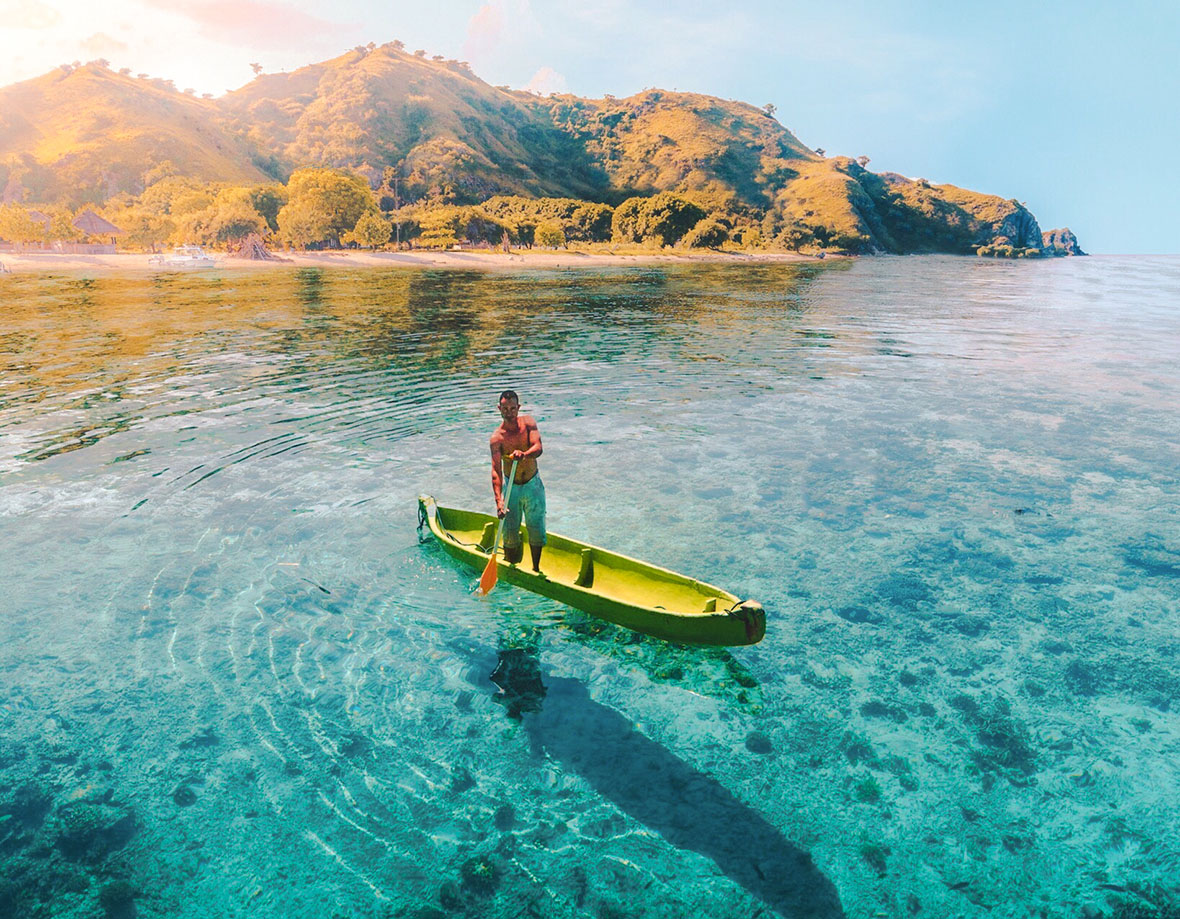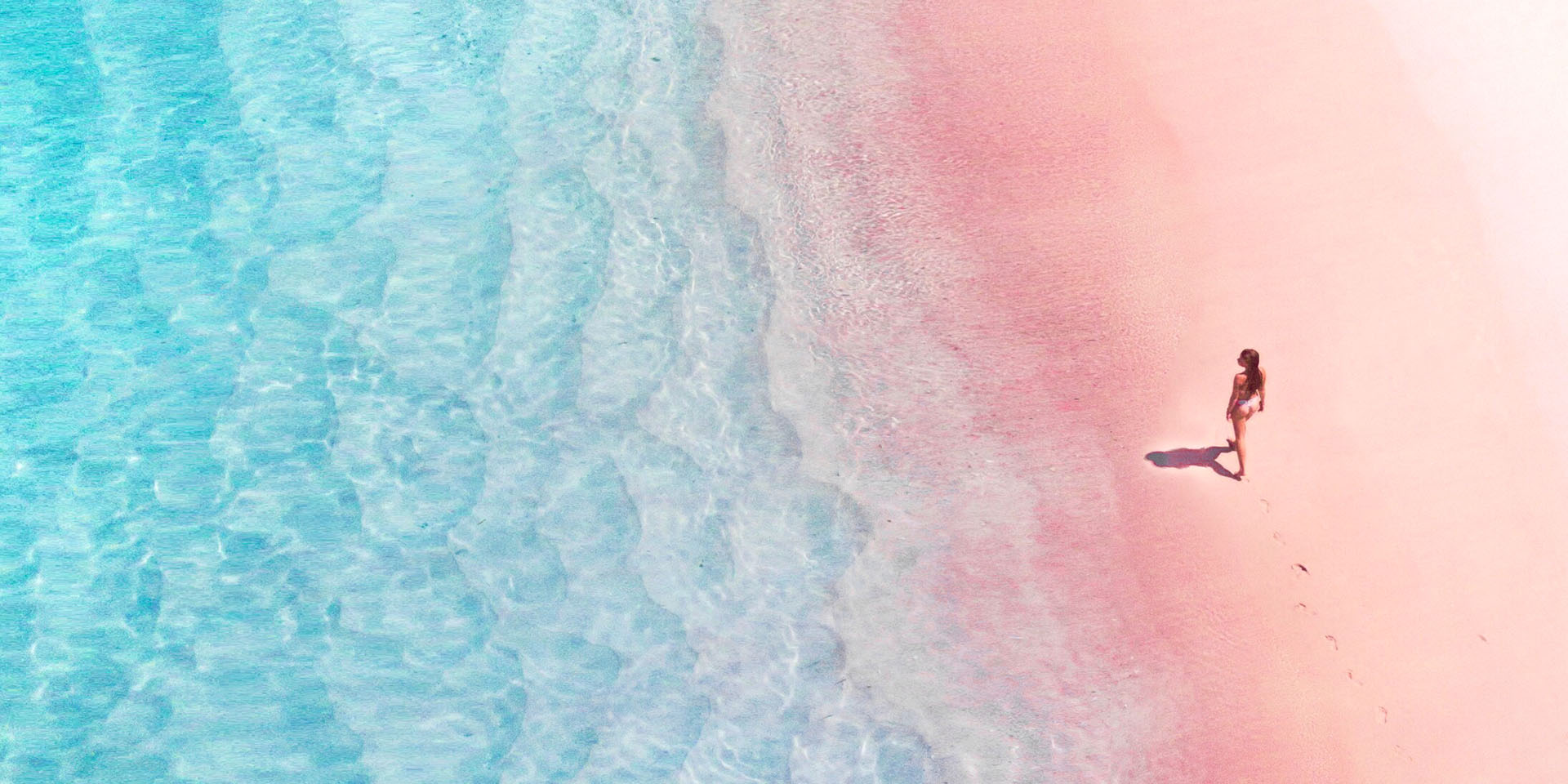WRITTEN BY
Jordan Hammond
PUBLISHED
September 11, 2017
LOCATION
Indonesia
Taking a break from the business of Bali, my partner, Sophia, and I decided to head for Labuan Bajo for a three-day boat tour of the islands of Komodo. A collection of volcanic islands between Flores and Sumbawa, Komodo National Park is often eschewed for its nearby neighbor, but it’s both less crowded and more satisfying.
Whilst famed for the notorious Komodo dragon, the largest living species of lizard, the National Park is also home to pristine beaches, cliffs, mangroves, savannahs, and arguably some of the most fascinating marine life in the world.
Pink Beach and Manta Point
ABOVE: The pinkness of the Pink Beach comes from a mixture of red coral and sand.
Our first stop was Pink Beach, a tiny stretch of white sand sprinkled with fragments of red coral, causing the sand to look candy floss pink. Our boat moored a few hundred meters from the beach, we jumped in and made for the shore.
From afar, Pink Beach looks just like any other sandy beach, but as we got closer, we noticed a glistening sheen take over. The afternoon was spent soaking up the sun and exploring the coral reef just off the shoreline. Pink Beach is a place that completely mesmerizes, and pictures never quite do it justice.
On our way back from Pink Beach, the captain informed us that we would stop by Manta Point, a section on the channel connecting the Indian and South West Pacific oceans: a sanctuary for manta rays.
As the boat weaved toward the point, the captain shouted and pointed at something in the distance. For a split second, there was panic amongst the passengers who had no idea what was happening. Then, out of nowhere, a group of 10 mantas surfaced next to the boat and gracefully danced alongside us for a few minutes, rising and diving in the crystal clear water below.
We later learned that mantas rarely surface for so long. On arrival at Manta Point, we dove in and immediately saw two giant mantas gliding a meter beneath us. We swam with them before the current got the better of us and had to turn back.
Peaks on Padar Island
Padar Island is one of the main islands in the National Park and by far the most beautiful. A short 30-minute sunrise hike to the top of the hill provides remarkable views across the sprawling Komodo scenery.
The following morning, we began our trek at 6am, and were glad of the cool morning breeze as we scrambled up rocks to reach the top.
Sweat on our brow, we reached the peak and saw the sloshing ocean’s bays around the island – the savannah and grassland terrain contrasting beautifully against the blue water. Returning to the bottom, it was time to snorkel.
The otherworldly marine life included hundreds of colorful fish, coral, starfish, and two lion fish floating close to the surface. It’s plain to see why Komodo is considered one of the best dive sites in the world.

Dragons and Rinca Island

We had heard so much about the Komodo dragons that we couldn’t contain our excitement in visiting Rinca Island to see the magnificent beasts for ourselves.
Arriving on the island, the guide whisked us off to the start point for the trek. We opted for the shorter trek due to the uncomfortable midday heat and were taken by our guide in search of the dragons. We were lucky enough to see six huge dragons, which appeared docile at first, but switched in seconds if agitated.

ABOVE: Traveling companion Sophia Pope in a boat off Rinca Island.
Thankfully, we were able to walk gingerly enough so as not to alarm them. Komodo dragons have killed villagers and tourists in the past, although these cases are few and far between. They carry a mild blood pressure lowering venom to kill their prey, and have evolved into efficient predators. Excited as we were to see them, 30 minutes seemed more than enough.
To anyone who asks for recommendations for Indonesia, Komodo National Park is always the top of my list. The peace and beauty of the area is outstanding. Get to Komodo before the tourists strike.


